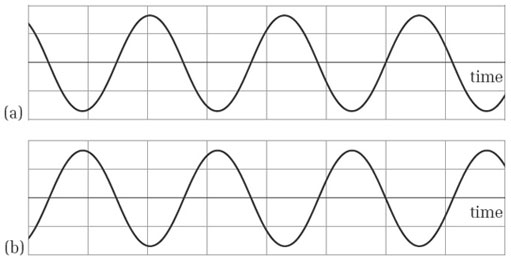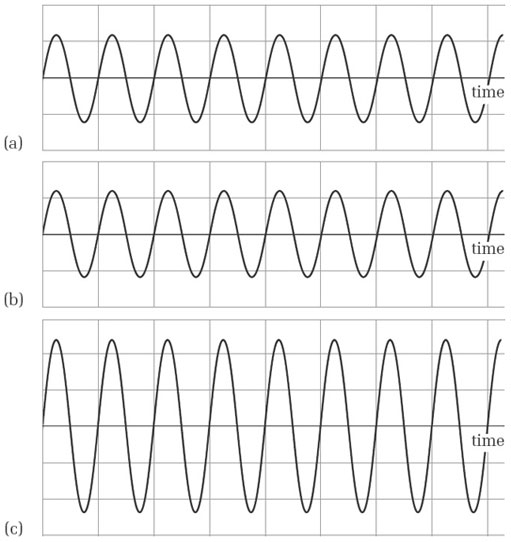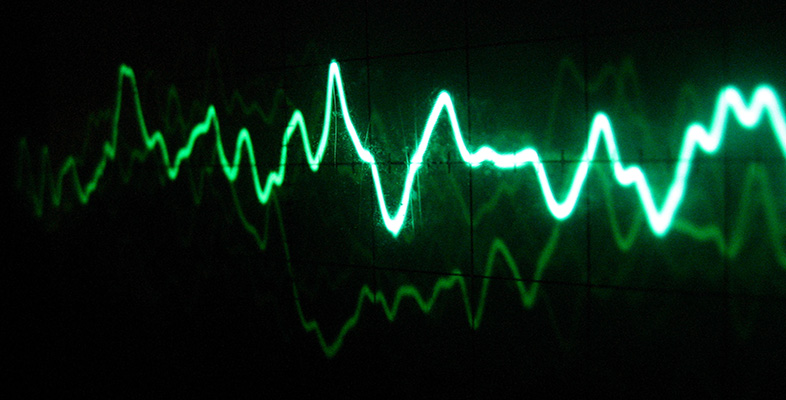5.2 Cancellation and reinforcement
I have shown that a phase difference between two points in space arises as a natural consequence of the finite time it takes a pressure wave to travel between two points in space. This is not the only way in which a phase difference can arise. A phase difference can arise between two sine waves if one is delayed relative to the other. Also, almost any form of electronic sound-processing equipment affects the phase of the signal it is processing, so that what comes out is not in phase with what goes in. This applies to common pieces of equipment such as amplifiers, filters, mixing desks, and so on, as well as recording equipment and effects units. The extent to which such shifts of phase are audible is contentious, but experiments suggest that a varying phase shift can be audible, whereas an unchanging one is inaudible.
One of the reasons for being interested in phase arises from the consequences of mixing, or adding, two sine waves that are phase-shifted relative to each other. Figure 14 shows two sine waves that are completely out of phase.

Activity 19 (Self-Assessment)
What is the phase difference between these waves in degrees?
Answer
The phase difference is half a cycle, or 180 degrees. We could equally say the waves were one-and-a-half cycles apart, or two-and-a-half, and so on, which would give phase differences of 540 degrees and 900 degrees respectively. However, it is customary to speak of a phase difference like this as 180 degrees.
The consequence of adding or mixing two sine waves that are 180° out of phase is complete cancellation of one wave by the other. This is the basis of a noise-reduction technique sometimes used in noisy environments: an out-of-phase version of the noise is played through amplifiers and loudspeakers into the noisy environment, causing cancellation and thus elimination of the noise. (Incidentally, the term ‘out of phase’ is used here to mean ‘180° out of phase’ rather than just ‘not in phase’.)
When two sine waves are in phase, there is mutual reinforcement. For instance, in Figure 15 sine waves (a) and (b) are in phase. When they are added or mixed the result is (c). Note that (c) is a sine wave with the same period (and hence the same frequency) as (a) and (b).

Intermediate amounts of phase shift, between completely in phase and completely out of phase, produce intermediate amounts of cancellation or adding. However, the result is always a sine wave with the same frequency as the waves being combined. The term interference is sometimes used to describe an interaction between two or more sine waves leading to reinforcement or cancellation.
Reinforcement and cancellation of musical sound through phase shifting is exploited in the effect known as phasing or flanging. In the original version of this effect, first used in the 1960s, a piece of music was mixed with a slightly delayed version of itself. This led to selective cancelling and reinforcement throughout the spectrum of frequencies in the music. If the amount of delay is varied the result is a very characteristic sound used in popular music. Nowadays the effect is usually created electronically, rather than by mixing a delayed version with the original sound.
Activity 20 (Listening)
Listen to the audio track below, which illustrates the effect of flanging (or phasing).
Click 'Play' to listen to Audio Clip (30 seconds)
Other instances of the effects of phase shifting in sound technology are too numerous to list, but one that you are sure to have heard is the ear-splitting whistling produced by (for instance) public address systems when the volume is too high and the microphone picks up sound from the loudspeaker. Here, at one particular frequency, there is an exact phase shift of 360 degrees between the microphone and sounds returning to the microphone from the loudspeaker. There is thus reinforcement, and under the right conditions a sine wave with a continually growing volume is produced at that particular frequency.
